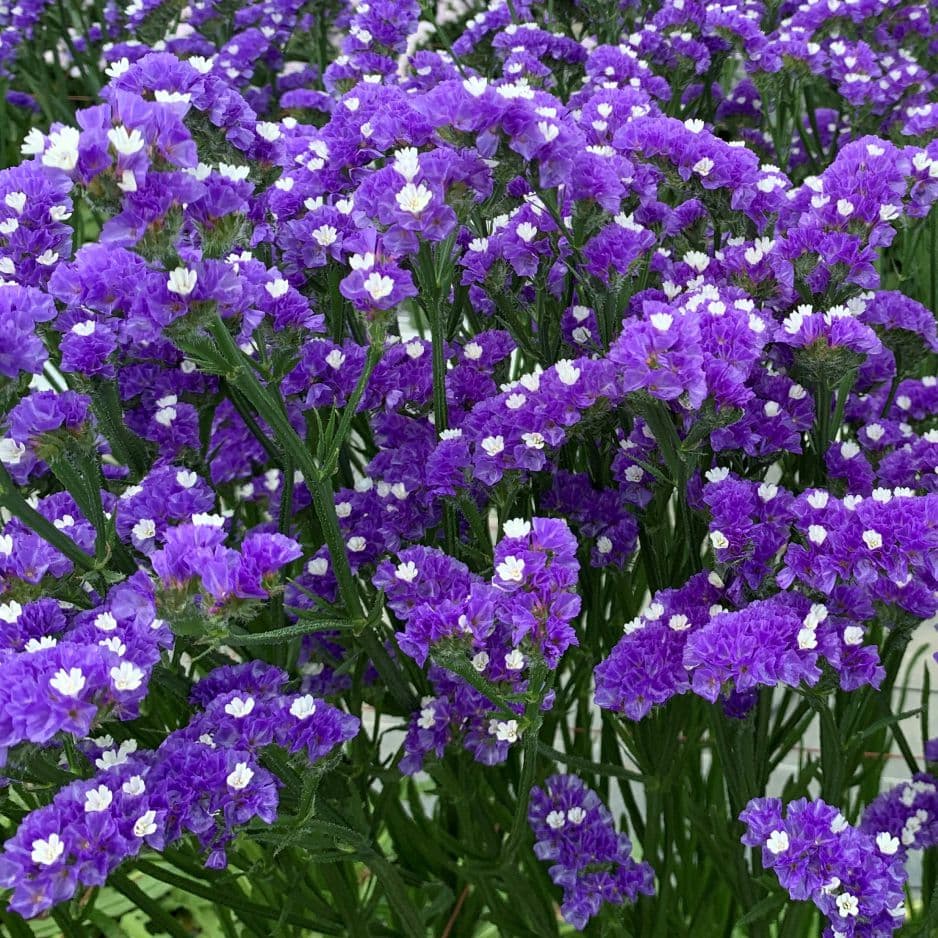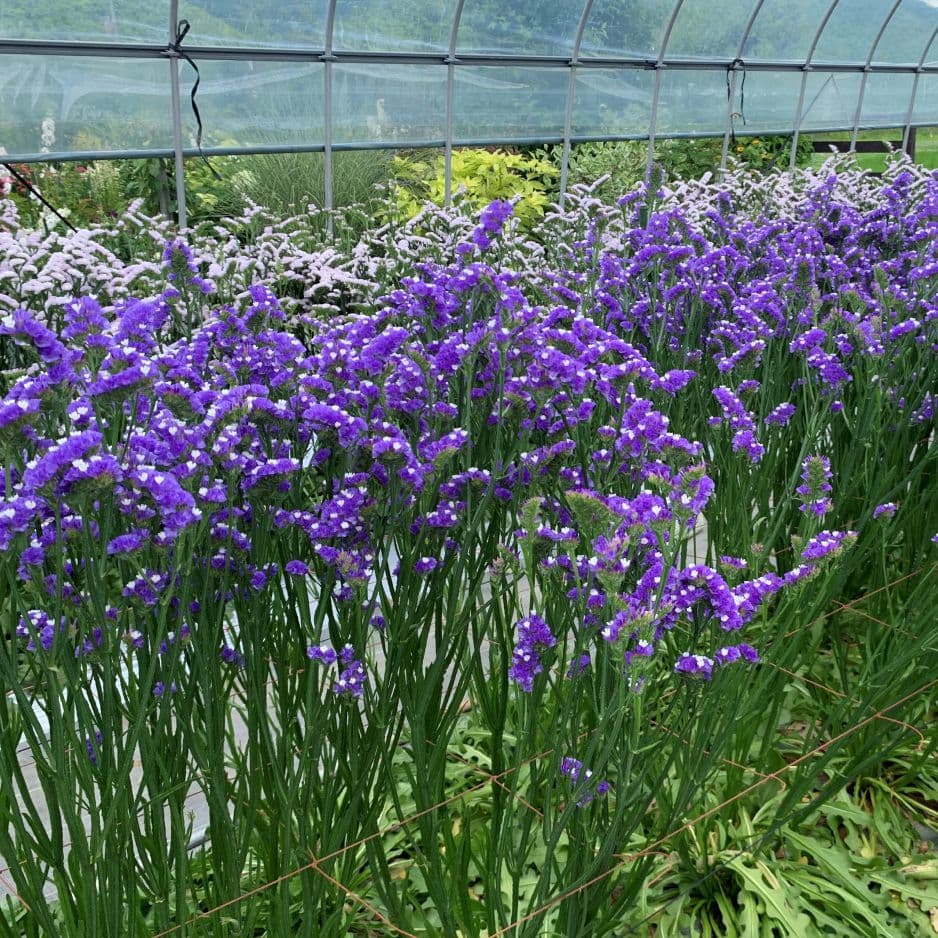スターチス シヌアータ
Orca Purple
Thick and tough stems, medium yield variety but stable plants height even at high temperatures.
Information
- Technical Name
- Limonium sinuatum
- House Name
- Isofamily of pine trees
- Japanese Name
- ハナハマサジ
- Country Of Origin
- Sicily, Palestine, North Africa, and other Mediterranean regions
Price
Mericron 50-hole plub seedlings】(Delivery date: February to May) 100 seedlings/33,000 yen (36,300 yen including tax) 7.5cm pot seedlings] (Delivery: Late August to September) 100 seedlings/33,000 yen (36,300 yen including tax)
Feature
There are many members of the Statice (or more accurately, Limoniums) family, used for cut and dried flowers, produced in many area and it is an important flower. It is essentially a semi-cold-tolerant perennial but treated as annual plant in horticultural terms. Usually sow in fall or winter, overwinters, after growing about 80 cm tall, flowers blooms in early summer.
In highland areas, bolting restarts in Autumn. In warm area, sinuatum often die due to high temperatures. Recently, more nutritional cultivars have become available, which can be produced for year-round production and are popular in the market all year round.
Cultivation Feature
Grow in a wide range of locations, from high land to warm area and in greenhouse to open fields. It takes advantage of climatic conditions from each region. Available various flower colors and can be used for dried flowers. Many cut flowers per one plant.
It is a labor-saving crop compared to other crops because it can be planted over a wide distance, requires fewer seedlings, and does not require any labor-intensive work other than put trellis netting, pinching and cleanup branches.
Pay attention to the crop under conditions such as high temperatures, humidity, poor drainage triggers gray mold then give damage to entire crop.
Suitable Place
Sinuatum prefers cooler climates, sunlight, well drainage, ventilation and dry-sandy soil.
Temperature
Use heater during night temperature to 10 °C in late November. At beginning of using heater, do not raise the temperature rapidly, but gradually increase the temperature. Keep the temperature below 25°C during the daytime, ventilate well and maintain lower temperature.
Pests
The most common disease is gray mold. It occurs just before harvest when the plants are dense and lose harvest. In greenhouse it occurs from March onward when air humidity is high. The double curtains should be opened and keep inside of greenhouse dry. Mosaic disease and russet may also occur. Be aware that cutworm, aphids, spider mites.
Watering
After planting, plants should be watered whenever it dries out. As the stem grows larger, irrigate sparingly. The greenhouse should be kept dry throughout the entire period.
Sowing
Sowing: Germination temperature 15 to 20°C. 3,000 grains per 10 mm. Sow in clean, well-drained, water-retentive soil. Sow in beds, boxes, or plugs. After sowing, cover the seedlings with a thin layer of soil and irrigate thoroughly. Germination is rapid, and the seedlings are ready in 4 days.
Planting: 30 days after sowing, when the seedlings have 5 to 6 true leaves. Shallow planting is recommended so that the growing point does not go into the soil with the emerged leaves. Planting should be done in two rows between two high beds, as the plant does not like high humidity. Planting distance (bed width 100 cm, aisle 60 cm, bed height 20 cm): 30 cm between rows for seedlings, 25-30 cm between plants. Planting distance (bed width 100 cm, aisle 60 cm, bed height 20 cm): 30 cm between seedling rows, 25 to 30 cm between plants, 2 rows planted, 4,200/10a: 40 cm between nutritional rows, 40 cm between plants. Planting of 2 rows, 3,000/10a.

